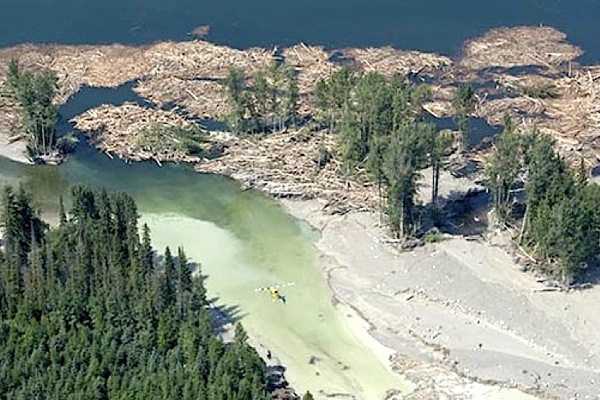 The B.C. government did not fail in its duty to proactively disclose concerns that had been raised over the Mount Polley tailings pond, B.C.’s Information and Privacy Commissioner Elizabeth Dunham has concluded.
The B.C. government did not fail in its duty to proactively disclose concerns that had been raised over the Mount Polley tailings pond, B.C.’s Information and Privacy Commissioner Elizabeth Dunham has concluded.
However, Dunham also ruled that there need not be any urgency – like an imminent threat to public safety – for the government to proactively disclose information that is in the interest of the public, and issued a clarification of section 25 (1) (a) of Freedom of Information and Protection of Privacy Act.
“With today’s report, I have concluded that urgent circumstances are no longer required to trigger proactive disclosure where there is a clear public interest in disclosure of the information,” Dunham said in a press release July 2.
On August 4, 2014 a perimeter dam surrounding Mount Polley’s tailings collapsed, pouring 10 million cubic metres of water and 4.5 million cubic metres of mine waste slurry into Polley Lake and local streams.
It was initially thought that the volume of water that had been allowed to build up behind the dam might have caused the tailings pond to collapse.
In February 2011, the engineering firm Knight Piésold Ltd. had warned Imperial about the growth of the tailings pond.
Imperial Metals (TSX:III), the mine’s owner, had applied for a permit in October 2012 to release 3 million cubic metres of water. At one point, the dam was nearly overtopped by the water. But the tailings pond failed before the company could do a release.
That incident and other concerns raised by engineering firms responsible for the dam’s maintenance raised the question of whether the B.C. government had taken appropriate steps to warn the public about a potential environmental and public heath threat through proactive disclosure of information on the tailings pond.
Dunham launched a review to determine if the government had failed to properly follow the FIPPA’s requirement for proactive public disclosure.
In the meantime, in January 2015, a three-person technical panel of expert engineers convened by the provincial government concluded that it was not the water pressure that triggered the dam’s collapse, although it did exacerbate the damage to local waterways.
The panel concluded that the collapse was the result of a fundamental design flaw that failed to take into account the instability of a glacial deposit underlying the tailings pond.
The problem was exacerbated by the fact that, when the company began to run short of rock that forms the outer portion of the dam, it was decided to compensate by increasing the steepness of the slope – something that was supposed to be an interim measure.
The panel concluded that, since the fundamental flaw was unknown, no amount of inspections could have prevented it.
In her review, Dunham said there appeared to be no documents that would have suggested the tailing pond posed a significant risk. Therefore the government was not obliged to proactively disclose anything.
Dunham said there were two documented events that might have triggered a proactive disclosure requirement, but that they did not meet the definitions of urgency.
However, she said that that information was “clearly in the public interest” after the event occurred. She said there should not have to be an urgent threat to the public for the government to proactively disclose information that is clearly in the public interest.